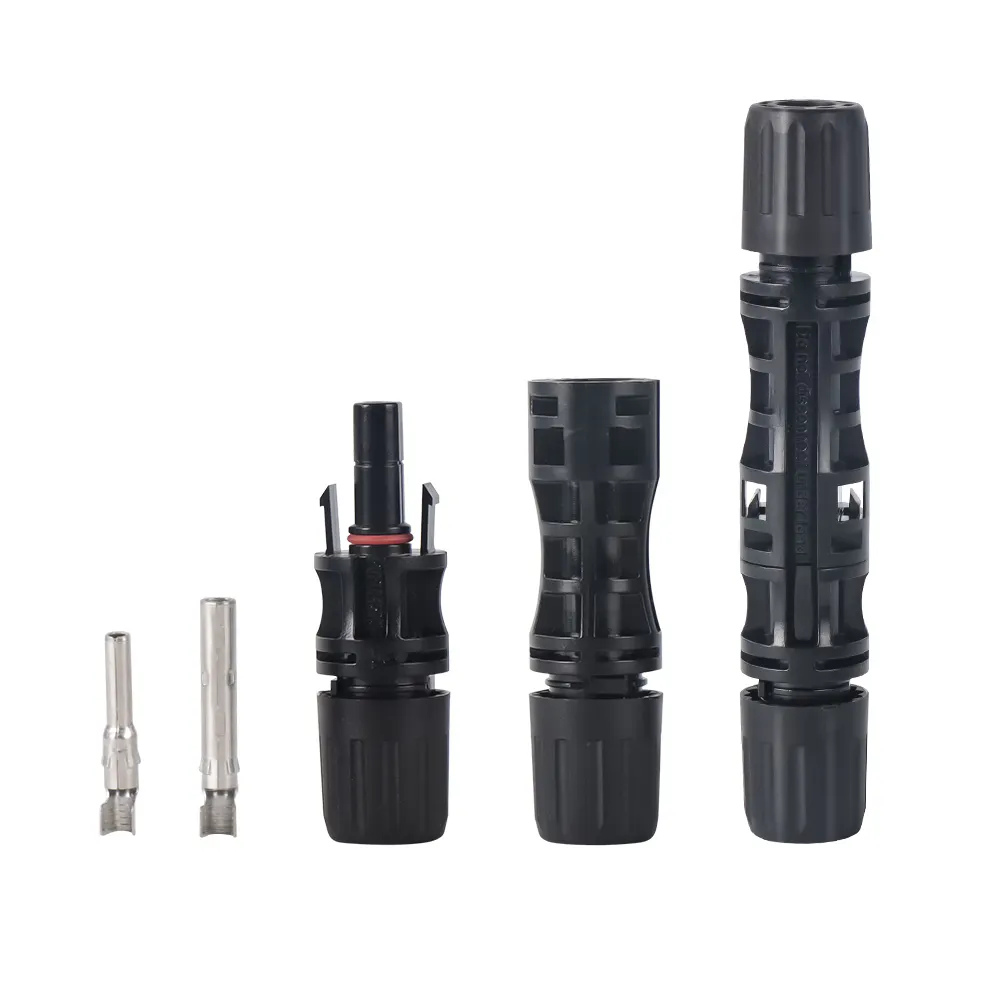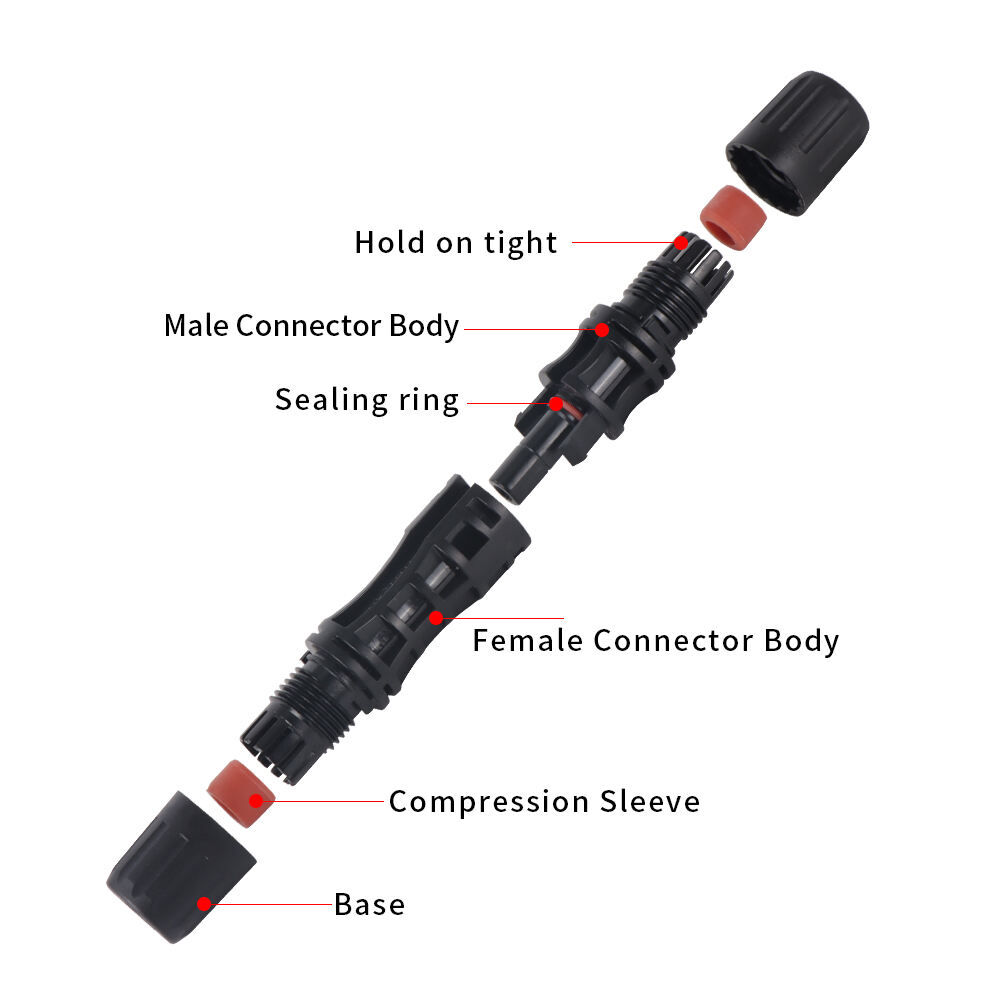The Critical Role of Connection Systems in Solar Power Generation
The efficiency and reliability of solar power systems heavily depend on the quality and performance of their photovoltaic connectors. These essential components serve as the vital links between solar panels, inverters, and other crucial elements of a photovoltaic system. By ensuring secure electrical connections and protecting against environmental factors, photovoltaic connectors play a fundamental role in maintaining consistent power output and system longevity.
Modern solar installations rely on sophisticated connection technologies to maximize energy harvest and minimize power losses. Understanding how these specialized connectors function and their impact on system performance is crucial for both installers and system operators seeking to optimize their solar investments.
Fundamental Components of Photovoltaic Connector Systems
Essential Design Features
High-quality photovoltaic connectors incorporate several critical design elements that contribute to their reliability and performance. The connector housing typically consists of weather-resistant polymers that provide excellent insulation and protection against UV radiation. The metal contact elements are precision-engineered from highly conductive materials, usually copper alloys with specialized plating, to ensure minimal electrical resistance and maximum current flow.
The locking mechanisms in photovoltaic connectors are designed to prevent accidental disconnection while allowing for easy installation and maintenance when needed. These systems often feature double-locking designs that provide both tactile and audible confirmation of proper connection, reducing the risk of installation errors.
Material Selection and Performance
The choice of materials used in photovoltaic connectors significantly influences their long-term performance. Advanced polymer compounds resist degradation from environmental exposure, maintaining their structural integrity and insulating properties over decades of service. Contact surfaces often feature silver or tin plating to prevent oxidation and maintain low contact resistance throughout the system's operational life.
Temperature stability is another crucial consideration, as photovoltaic connectors must maintain their electrical and mechanical properties across a wide range of operating conditions. Premium materials ensure consistent performance from sub-zero temperatures to the extreme heat often encountered in solar installations.

Technical Specifications and Safety Standards
Industry Certifications
Photovoltaic connectors must meet rigorous international safety standards and certification requirements. These include UL certification in North America, TÜV certification in Europe, and compliance with IEC standards globally. Such certifications ensure that connectors can handle specified current loads, voltage ratings, and environmental conditions safely and reliably.
Testing protocols evaluate factors such as temperature cycling, humidity resistance, salt spray exposure, and mechanical stress tolerance. Only connectors that demonstrate consistent performance across all these parameters receive certification for use in photovoltaic systems.
Safety Features and Protection Mechanisms
Modern photovoltaic connectors incorporate multiple safety features to protect both equipment and personnel. Touch-safe designs prevent accidental contact with live components, while polarized connections eliminate the possibility of incorrect mating. Advanced sealing systems achieve IP65 or higher ratings, ensuring complete protection against dust and water ingress.
Arc flash protection is another critical safety consideration, particularly in high-voltage systems. Leading connector designs include features that minimize the risk of arc flash during connection and disconnection operations, even under load conditions.
Impact on System Performance and Reliability
Power Loss Prevention
Quality photovoltaic connectors play a crucial role in minimizing system power losses. By maintaining low contact resistance and ensuring stable connections, these components help maximize the transfer of generated power from solar panels to inverters. Even small improvements in connector efficiency can translate into significant energy savings over a system's lifetime.
Thermal management is another key aspect of connector performance. Well-designed photovoltaic connectors efficiently dissipate heat generated during operation, preventing temperature-related power losses and potential damage to connected components.
Long-term System Stability
The durability of photovoltaic connectors directly influences system reliability and maintenance requirements. Premium connectors maintain their electrical and mechanical properties for 25 years or more, matching the expected lifespan of modern solar panels. This long-term stability helps ensure consistent power output and reduces the need for maintenance interventions.
Regular inspection and maintenance of photovoltaic connectors can help identify potential issues before they impact system performance. Signs of physical damage, corrosion, or loose connections should be addressed promptly to maintain optimal power output.
Installation Best Practices
Professional Installation Guidelines
Proper installation of photovoltaic connectors is crucial for system performance and safety. Trained installers follow specific procedures for cable preparation, including precise stripping lengths and crimping techniques. They also ensure proper torque application during assembly to achieve optimal electrical contact without damaging components.
Weather conditions during installation can affect connector performance. Installers must follow manufacturer guidelines regarding temperature and humidity limits during installation and take appropriate precautions to prevent contamination of contact surfaces.
Quality Control Measures
Comprehensive quality control procedures help ensure reliable connector installation. This includes visual inspection of crimped connections, pull-testing to verify mechanical strength, and electrical testing to confirm proper functionality. Documentation of installation procedures and test results provides valuable reference information for future maintenance.
Training and certification programs for installers emphasize the importance of proper connector installation techniques. Regular updates to these programs ensure that installation practices keep pace with evolving connector technologies and system requirements.
Frequently Asked Questions
What is the expected lifespan of photovoltaic connectors?
High-quality photovoltaic connectors are designed to last 25 years or more, matching the typical warranty period of solar panels. However, this longevity depends on proper installation, environmental conditions, and regular maintenance.
How often should photovoltaic connectors be inspected?
Professional inspection of photovoltaic connectors should be performed annually as part of routine system maintenance. However, more frequent inspections may be necessary in harsh environments or following severe weather events.
Can different brands of photovoltaic connectors be mixed in a system?
While technically possible in some cases, mixing different brands or types of photovoltaic connectors is generally not recommended and may violate warranty terms or safety regulations. It's best to maintain consistency with a single manufacturer's products throughout the system.




